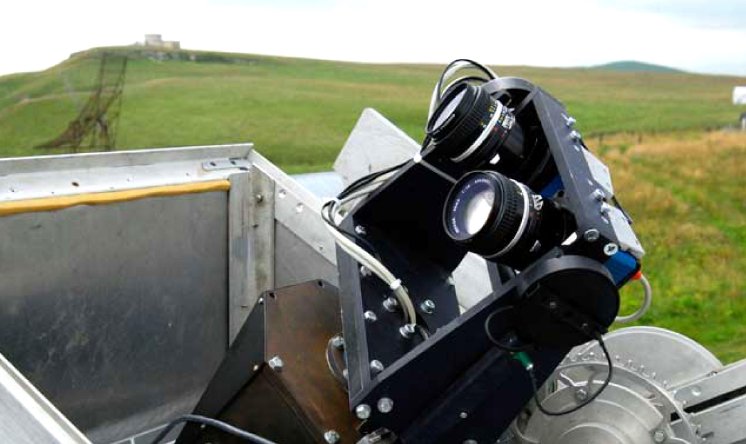The project has three main objectives: the detection limit of Gamma-ray events, the search for an optical trace of such events, and investigating whether some optical transients are connected with Gamma ray bursts or not.
Optical transients detection methods
Astronomers use two methods to detect these bursts: The first, a direction center of a space Gamma ray observatory (such as the Scott or Fermy observatories) sends a signal along with coordinates to other observatories via the internet as soon as a burst is detected. Telescopes that receive the signal then point towards the specified direction. The process takes at least ten seconds. Those first missed seconds are believed to be the most important in term of observation as the GRB phenomenon is at its brightest.
The second method uses highly sensitive cameras with a wide field of view covering hundreds or thousands of degrees of a sky area and enhances the chances of directly detecting a GRB from start to finish.
The Sternberg Institute’s system
Several camera systems are operating throughout the world. Astronomers at the Moscow State University based their system around a CCD camera as they felt that conventional astronomy cameras were not suitable for this application due to their long read-out and exposure time, which would lower the detection probability by a factor of two or three.
The Steinberg Institute chose the 11-Megapixel Prosilica GE4000 with a GigE Vision compliant interface. The GE4000 features the high-quality Kodak KAI-11002 CCD image sensor that provides the high resolution and high sensitivity required to detect the faintest stellar magnitude of optical transients.
The Sternberg Institute’s system consists of a custom made compact equatorial mount allowing fast pointing to the desired sky region and star tracking synchronous with diurnal sky rotation. Two GE4000 cameras are set-up inside the mount. Each is fitted with a fast f/1.4 50mm prime Nikkor lens for optimal image capture in low-light conditions. The optical axes of the cameras on the same mount are diverged by 13 degrees along the sky parallel to avoid overlapping. The total sky coverage of the system is 2,000 square degrees.
The mount with cameras is installed in a fully robotized enclosure powered by a 24V DC motor. The camera mount and enclosure are operated by a computer located within the enclosure and linked to the observatory LAN. It is powered by custom made controllers connected to the computer via an RS485 connection.
A scheduler program activates the system at night when the observatory IR cloud sensor reports clear skies. Each camera is connected to its own image processing computer by a 25m Gigabit Ethernet cable. These computers are primarily used for image processing. Image acquisition is synchronized by the scheduler program.
A total of three systems were set-up by the Sternberg Institute: two near Kislovodsk in the Northern Caucasus at the Pulkovo observatory, site of the new 2.5 meter aperture telescope, and one in Irkutsk, Siberia. The latter was chosen for its 5 hour time difference with Moscow (hence earlier night fall).
Technical issues
The success of the faint signal detection is driven by the signal to noise ratio of the CCD. The Sternberg Institute used an astronomical method to quantify the noise characteristics of the GE4000. The difference between two subsequent frames taken on a uniformly illuminated CCD depends on the total signal amount that provides both the analog-to-digital conversion factor and the readout noise. The Institute determined the readout noise to be very low.
Another issue to be taken into account is hot pixels. It is essential for hot pixels not to be mixed with stellar images in the detection software. After running several tests, the Sternberg Institute came to the conclusion that the position of hot pixels across the CCD and their strength is sufficiently stable to produce a map which is then used for masking the images before source detection.
The system is required to work in sub-zero temperatures. Both GE4000 cameras performed well in -20°C temperatures producing enough heat in continuous shooting mode to sustain all functions.
The system in practice
Once a Gamma Ray burst is detected, the system is pointed to the specific sky area and continuous image acquisition is started. Exposure is set to 5 seconds to optimize the detection of the bursts, and five to nine thousand frames per observation-night are captured by each camera.
The camera-dedicated computers acquire and store the images, make the object detection and measurements, convert their coordinates and send a list of all detected objects to the central server. The latter then analyzes the data using particular coincidence criteria, stellar databases and various catalogs to reveal the probable nature of detected events.
The image processing and scheduling software is written in C++ using the Prosilica SDK.
Link: Prosilica GE4000 Camera:
http://www.rauscher.de/...
RAUSCHER
Johann-G.Gutenberg-Str. 20
D-82140 Olching
Phone +49 81 42 / 4 48 41-0
Fax +49 81 42 / 4 48 41-90
E-Mail: info@rauscher.de
www.rauscher.de
Sales in Germany and Austria


